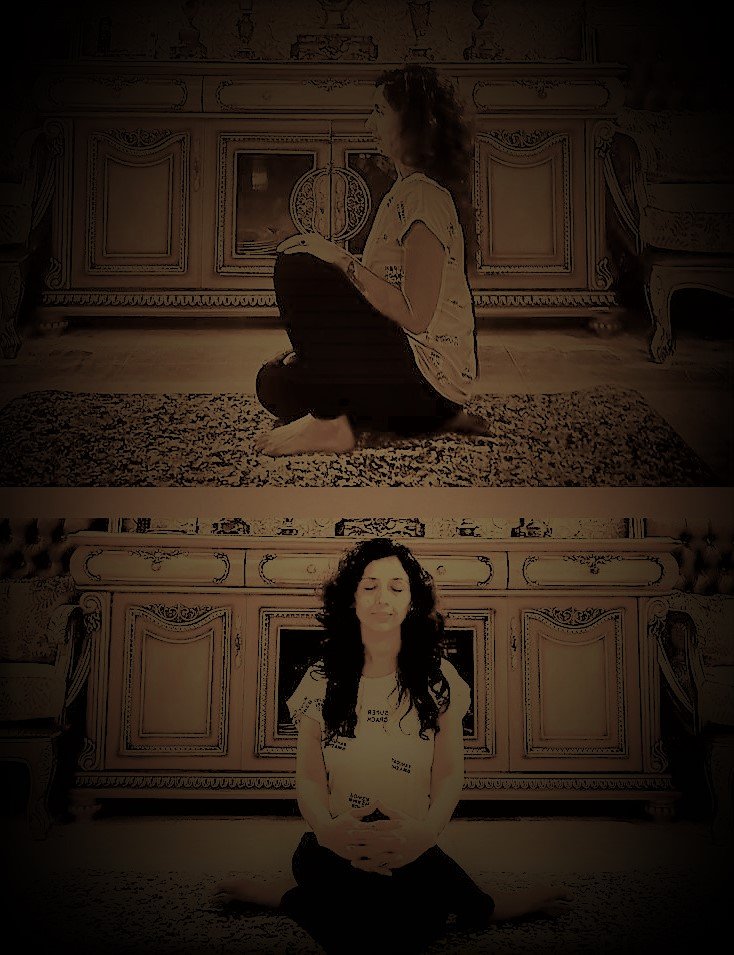Day-21 Meditative asanas: Vrushasan & Virasana-Mitraasha




Knowledge of Yoga is infinite, boundless and timeless. “Learning Yoga is an everlasting journey that leads you within and Within is where you find the world of immortal bliss”. –Mitraasha
Namaste All My Yoga Yaatris! May Yog Bless You!
The idea behind running this 51 Days Yoga Consciousness series is to proffer my modest learnings and share the divine pearls of Yoga science with people at large. Let’s have a conjoint intent to learn, implement and extend the wisdom of Yoga with a positive co-action and harmonious reverberation amongst each other.
Hundreds of different asanas are performed in yogic practice, however it is stated all these asanas came into being elementally to support the Yogi develop the strength and resilience to sit and stay in one of the classic meditative postures for long and accelerate on the journey of finding the final objective of Yoga!
Meditation is the asana for the mind. A meditative posture incites a prayerful state and a meditative practice takes your mind in quietude. Sitting for long is not the motive, it is about the reconstituting of the swaying mind to a state of calmness and the reverberations of tranquility, peace that precipitates as a result of practising in the meditative posture. There develops mindfulness and a realization of being in the present is instilled.
Patanjali’s Yoga Sutras on Dharana states: ‘Deśa bandhasya cittasya dhāranā’, which means- “Dharana is when the mind stuff is held concentrated in one place”, and on Dhyana it says: ‘Tatra pratyaya eka tānatā dhyānam’, which translates as – “Then (when the mind force) is held onto that one essence/place for an extended/continuous duration is dhyana.”
Seeing peripherals, this may appear to be not falling in the category of meditative asanas, but when practiced, one can relate to the benefits such as a regulated command over virility, well directed thoughts and control over your ever-fluctuating mind.

It gives a good stretch to the spine, thighs, calves, ankles, hips and aid to regulate the erectness of the spine, especially for other meditative practices. It augments the blood circulation in the lower abdomen region and enhances digestion. Establishing oneself in this posture by placing both knees with folded legs one above another in a specific way, fortifies and strengthens the groin as well as the excretory muscles. Consistent practice improves awareness of the body and mind and gradually builds calmness, tranquility and peace of mind.
Also called the Heroic Posture, it boosts determination and instills steadfastness. Legend has it that this posture is assumed by Lord Hanuman, the dauntless devotee of Lord Rama whose courageousness and equilibrium were an exemplary integration. He acquired this pose while being posited at the feet of his lord.

It extends a good stretch to the hips, lower back, thighs, knees, ankles and feet. It enhances blood circulation in lower extremities and gives relief to tired legs. It vitalizes the foot arches and extends relief to hurting flat feet. Continuously practicing the posture correctly for a long period of time, straightens the spine, amplifies mind-body awareness and reinforces the sense of remaining in the present. It invigorates a sense of well-being, instills emotional stability, boosts confidence and enhances tranquility.
Thought of the day: “The mind is restless and difficult to restrain, but it is subdued by practice”- Bhagawad Gita
Link to day 20: Meditative Asana-Vajrasana https://kreately.in/day-20-meditative-asana-vajrasana-mitraasha/
Link to day 22 : Hasta-Mudras(15) https://kreately.in/day-22-hasta-mudras15-mitraasha/
DISCLAIMER: The author is solely responsible for the views expressed in this article. The author carries the responsibility for citing and/or licensing of images utilized within the text.
